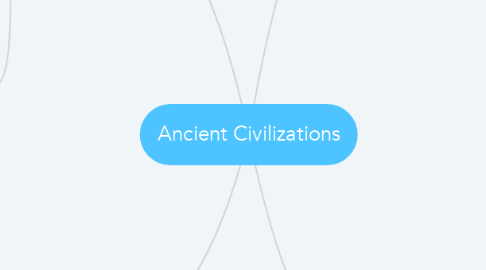Ancient Civilizations
by Kyle Burch

1. Sumer
1.1. Geography, The Fertile Crescent is a region of the Middle East that stretches in a large, crescent-shaped curve from the Persian Gulf to the Mediterranean Sea. The Fertile Crescent includes Mesopotamia (mes uh puh TAY mee uh), a wide, flat plain in present-day Iraq. This plain lies between two great rivers, the Tigris (TY gris) and the Euphrates (yoo FRAY teez). In fact, Mesopotamia means “land between the rivers” in Greek. Today, this region is in Iraq. Here, thousands of years ago, the world’s first civilization began to form. This was the civilization of Sumer (soo mur).
1.2. Writing, Ancient Egyptians developed early forms of writing by 3200 B.C. At around the same time, Sumerians were developing their own system of writing. Scholars aren’t sure who developed writing first. Egyptian writing used hieroglyphics. A Hieroglyphic is a drawing or symbol that represents a word or a sound. Most ancient Egyptians did not know how to write. Scribes, or officials who knew how to write, were valued for their knowledge. With writing, Egyptians could share and preserve knowledge. This ability made its complex civilization and advanced technology possible.
1.3. Government, During the 3000s B.C., two kingdoms developed in Egypt. Legends say that Narmer united the two kingdoms in about 3000 B.C. This made him the first Pharaoh, or king, of a united Egypt.
2. Egypt
2.1. Geography, Like the Fertile Crescent, Egypt was home to one of the world’s first great civilizations. As in the Fertile Crescent, Egypt’s civilization developed in a river valley with rich soil. However, Egypt’s geography and culture differed in many ways from those of the Fertile Crescent. The ancient Egyptians treasured the Nile River. They knew that without the Nile, their land would be nothing but a sun-baked desert of bright blue skies and dry sand.
2.2. Writing, Ancient Egyptians developed early forms of writing by 3200 B.C. At around the same time, Sumerians were developing their own system of writing. Scholars aren’t sure who developed writing first. Egyptian writing used hieroglyphics. A Hieroglyphic is a drawing or symbol that represents a word or a sound. Most ancient Egyptians did not know how to write. Scribes, or officials who knew how to write, were valued for their knowledge. With writing, Egyptians could share and preserve knowledge. This ability made its complex civilization and advanced technology possible.
2.3. Government, During the 3000s B.C., two kingdoms developed in Egypt. Legends say that Narmer united the two kingdoms in about 3000 B.C. This made him the first Pharaoh, or king, of a united Egypt. The pharaohs relied on a Bureaucracy, or a system of offices and officials that handle the business of government. The bureaucracy collected taxes from farmers. Farmers paid these taxes mainly in the form of surplus crops. The bureaucracy took some of this surplus for itself. It distributed the rest to priests, to the pharaoh, and to artisans and merchants who worked for the pharaoh.
3. Indus
3.1. Geography, Indus River The first civilizations arose near rivers. One such civilization was in India. Its people farmed along the Indus River. Farmers grew plenty of food, and populations grew. In time, some of the people settled in towns and cities and formed governments.
3.2. Writing, Scholars have not yet discovered how to read the symbols found on the stone seals and pottery of the Indus Valley. There are too few examples of each symbol to be sure of its meaning. Most experts think that these marks are a form of writing. However, they do not know if these markings are names, records of sales, or something else.
3.3. Government, This makes it seem unlikely that kings ruled the Indus Valley. Based on the available evidence, it just isn’t possible to know for sure what kind of government the Indus Valley had. Most cities had a huge citadel, or forti-fied area. The walled citadel was built on a raised platform of earth and brick that could have protected it from floodwaters or attackers. Scholars are not sure, but the citadel may have been a center of government, religion, or both.
4. Huang/Shang
4.1. Geography, Much of China is covered by rugged mountains and vast deserts. Despite the challenges of the geography, early people found the resources they needed along China’s river valleys. Rivers helped China’s development, just as they aided the development of civilizations in Mesopotamia, Egypt, and India. China has two main rivers: the Huang and the Chang. They provide water for farming. People move goods along these waterways.
4.2. Writing, At times, the Chinese also used oracle bones to record important events related to their questions. From these written records, scholars have learned much about ancient China and its rulers. The Shang did not use an alphabet for their written words, which are called Characters. Instead, some characters were Pictographs, that is, pictures that represent
4.3. Government, From the early settlements along the Huang River, the Shang kingdom rose to dominate a large part of the region to become the first documented Chinese Dynasty. A dynasty is a ruling family that holds power for many years. Rule passed from brother to brother and from the youngest brother to his oldest son. The Shang leaders organized groups of farmers to clear and prepare new land. The result was larger


